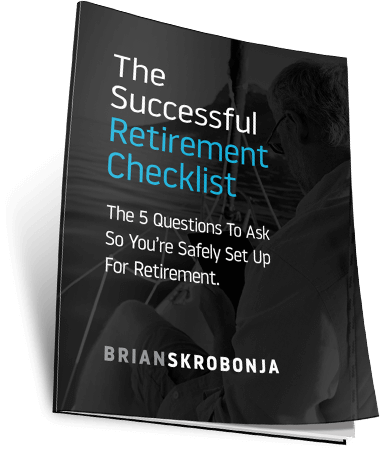Could You Be an ‘Immature’ Investor? 5 Danger Signs To Watch Out For
We all have blinders about various things in our life that leave us blind to things we do not know or understand.
What is a blinder? Well, it could be a bias about something, it could be a protection mechanism to ignore something, it could be immaturity about something or it could simply be ignorance of not knowing any better.
Now, I realize that the terms ignorance and immaturity are often terms used to define someone’s behavior in a negative light but if we are honest with ourself, we all have some level of ignorance and immaturity about things.
So, when I use the term investing immaturity … I am not insinuating that someone is juvenile, what I am suggesting is that the way some investors think about their money and their investments can at times be immature.
In fact, what I have found is that for most people who are experiencing investing immaturity is that once they are provided more education about how to invest, they often move past this stage into more advanced wealth strategies.
The best way to look at this is that like anything: We only know what we know. In other words, the root cause of investing immaturity for most people is simply not knowing any different.
To make the most of your investments, you need to think about them in the right way because investing immaturity can hold you back from reaching the next level with your finances.
Investing immaturity is a potentially costly condition that a surprising number of investors exhibit and is not always easy to identify during the early stages of accumulating wealth when there is not much to lose.
However, as time goes on and more wealth is built, immaturity can be spotted quickly in a conversation when certain mindsets and behaviors surface.
For someone wanting to reach the next level of growing and protecting their wealth, there are certain behaviors you should avoid.
The first of these behaviors is – Return Chasing
Recency bias can be a symptom of investing immaturity. This can be defined as a tendency to be critical of one’s investment performance, or a “grass is greener” feeling, when comparing their earnings (or losses) to another investment that may have done better during a specific period of time.
An example of this is when an investor experiences a loss in one of their investments while learning of another investment from a friend or a Google search that had a gain, and then acting on that information to chase the return.
This behavior is a blatant disregard of everything we know about proper diversification and risk management fundamentals.
Markets don’t run in a straight line.
Various market conditions can result in one asset class outperforming another one year to the next.
What a mature investor realizes is that performance is like a photograph of a specific point in time with specific market conditions occurring that are unlikely to be repeated in exactly the same way in the future.
The fact is that if investing was as easy as finding the highest returning investment, everyone would simply find and hold that one top performing investment (whatever that investment is), but it is not that easy which is why we diversify our portfolios.
Another behavior is – Fee Sensitivity
Fee sensitivity is not as common as chasing returns, but it is a core trait of investing immaturity.
Picture this: You have fund A, which is a U.S. equity fund, and fund B, which is an emerging markets fund. Fund A has a fee of50 basis points annually, while fund B is 200 basis points annually.
Someone with fee sensitivity will outright reject the idea of investing in fund B without any consideration for how such a fund could benefit or enhance their portfolio’s long-term returns.
The truth is that higher fees don’t always translate to a bad investment. Some investments and strategies are simply more difficult to manage due to a number of factors.
For some investments, there is less public information available about the underlining investment, which results in having to do more research and at times having feet on the ground in foreign countries in an effort to get a better sense of operations, management and supply chains.
This more labor-intensive research adds to the cost of managing such an investment, but it shouldn’t be an absolute reason to not hold the investment.
Comparing fees within the same asset class and product types can make some sense, but fees should not be used to compare investments that are of different asset classes, strategies or objectives.
Another problematic behavior is – Liquidity Blinders
Those with investing immaturity are often be blinded by the holding periods and restrictions of certain product types that lead them away from using any investment without liquidity.
For those with liquidity blinders, they often miss out on the benefits of using an investment with less liquidity by overweighting the importance of not having access to 100% of their money at all times.
This is a problem and quite frankly makes no sense.
First of all, all investments should be considered long term.
Second, not all investable assets should have the same purpose.
Third, no investor needs to access all of their money all of the time.
Here is the deal on this…
When you are considering somewhere to invest your money, you have to understand that you’re not going to find a single product solution.
You will have to adjust your filter for liquidity and consider the added benefits or improved diversification that may come with a less liquid investment.
For instance, public market investments (such as stocks, ETF’s and mutual funds) use public exchanges that allow for easy trading to move in and out of these investments.
Meanwhile, there are other options such as interval funds, annuities and private market investments that are not publicly traded and aren’t as easily liquidated, but have benefits and characteristics that may not be available in a public market investment.
So, if your filter is liquidity without flexibility, you could very well miss out on improvements available for your portfolio.
Contrasting the differences between one investment type and another and highlighting their benefits and characteristics allows for broader diversification and better risk management.
The characteristics that make these investments different are generally what make them useful in enhancing and diversifying a portfolio.
Of course, you should never use one product for 100% of your money, and having access to cash sufficient to meet your needs is a priority in your planning.
There is also -Product Biases
Investing immaturity often carries with it biases about certain products based on unsubstantiated opinions of others.
I speak with hundreds of people each year and I will often hear comments like, “I don’t like annuities,” and when asked why, the response is often, “I heard they aren’t good.”
It’s a human phenomenon that, after 28 years of being a financial adviser, I simply cannot explain.
Human beings tend to use other people’s opinions to fill gaps in their own knowledge or understanding of something, which can leave them with a distorted belief about the truth.
Annuities are just an example. I hear similar comments about nearly every product type, and in the majority of these conversations the response is similar and has the same origin.
A mature investor will seek to grow their knowledge based on facts and avoid filling their lack of knowledge with someone else’s opinion.
It is true that every product has its benefits and its flaws.
There are no unicorns when it comes to investments, which underscores the importance of not having investing immaturity.
Then there is – Outcome Confusion
Investing Immaturity can cause confusion about what outcome we as investors are ultimately trying to achieve.
Some seem to think that the outcome of any and all investments is maximum growth but that simply is not true.
Sometimes income is the goal while other times, preservation of principal is the goal.
These are just examples but maximum growth is not always and shouldn’t be the only outcome you are looking to achieve.
The best example of this would be a pilot, who must use the majority of the plane’s fuel at takeoff to push the engines to defy gravity and reach a certain altitude and speed.
Once reaching altitude, the pilot adjusts for the flying conditions while relying on the plane’s instruments to maintain speed, altitude and course.
When nearing the destination, the pilot prepares for landing by manipulating speed and adopting an approach that is determined by the weather conditions, wind speed, visibility and other variables to ultimately get safely on the ground.
When you are trusting the pilot to get you from point A to point B, you would want them to have the goal of arriving safely at your destination.
But imagine a pilot who — rather than being focused on arriving safely at their destination — is instead focused on which way the wind is blowing, ignoring the final destination and only focusing on maintaining the greatest tail wind and flying as fast as possible until they run out of gas.
Seems ridiculous, I know, but this is an example of how many people view their investments.
They want to grow their money without consideration for how and when they will ultimately use it.
Focusing on the wrong things can lead you toward the wrong outcome.
Just like a pilot flying an airplane, investing has stages each requiring a different approach requiring various product types and risk-management strategies to safely ease into retirement.
There is no exact science or perfect way of going about any of this, but investor immaturity — like any other deficiency— must be overcome to effectively navigate markets, headwinds, opinions and emotional decision making.
Everyone reacts immaturely from time to time. We all have fears and opinions to overcome, however, when we don’t acknowledge them and don’t work on overcoming them, they can doom our results long-term.
A lot of stress, uncertainty, confusion and disappointment can be avoided or overcome by seeking to become more mature in these decisions.
That concludes todays podcast, I am Brian Skrobonja and thank you for listening to the commons sense financial podcast.







